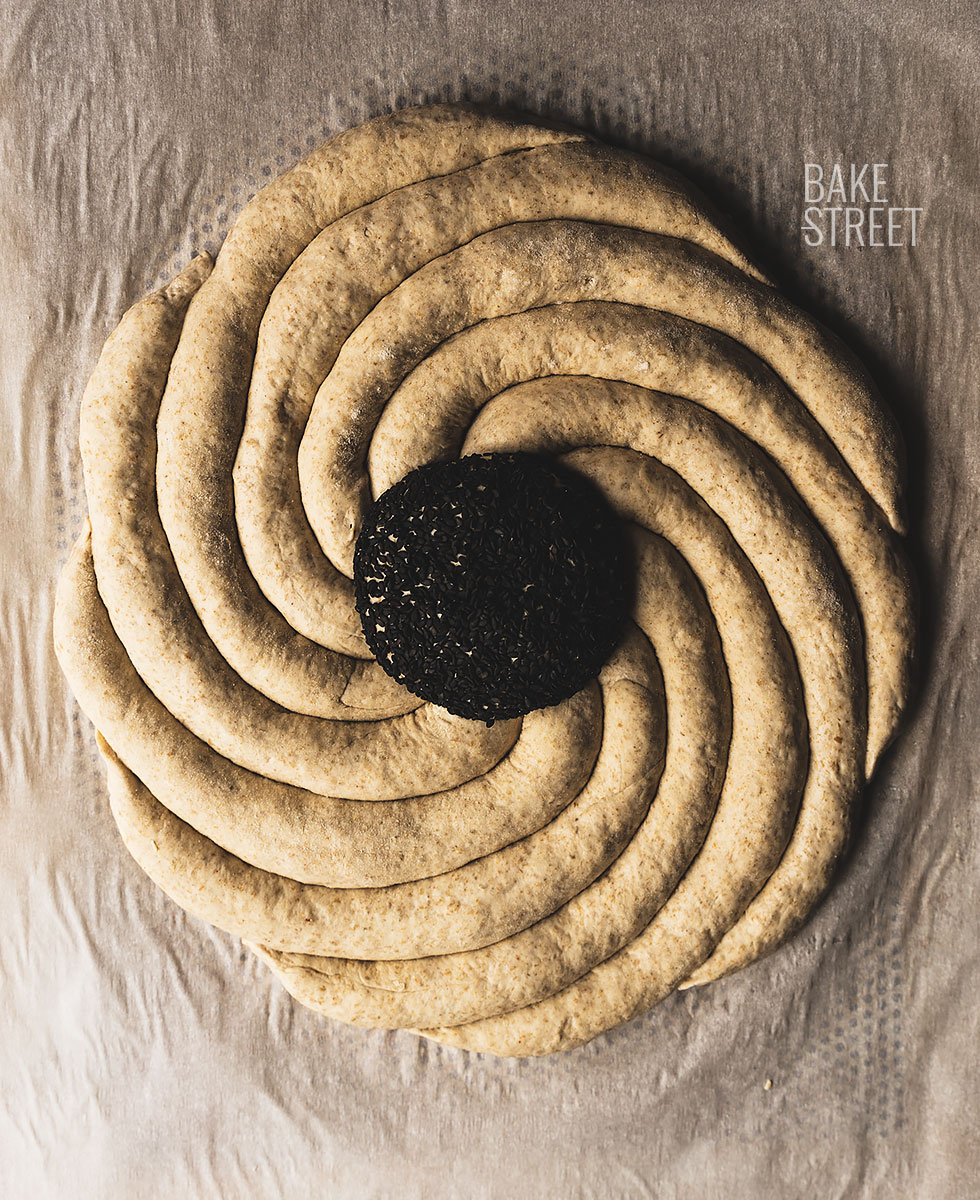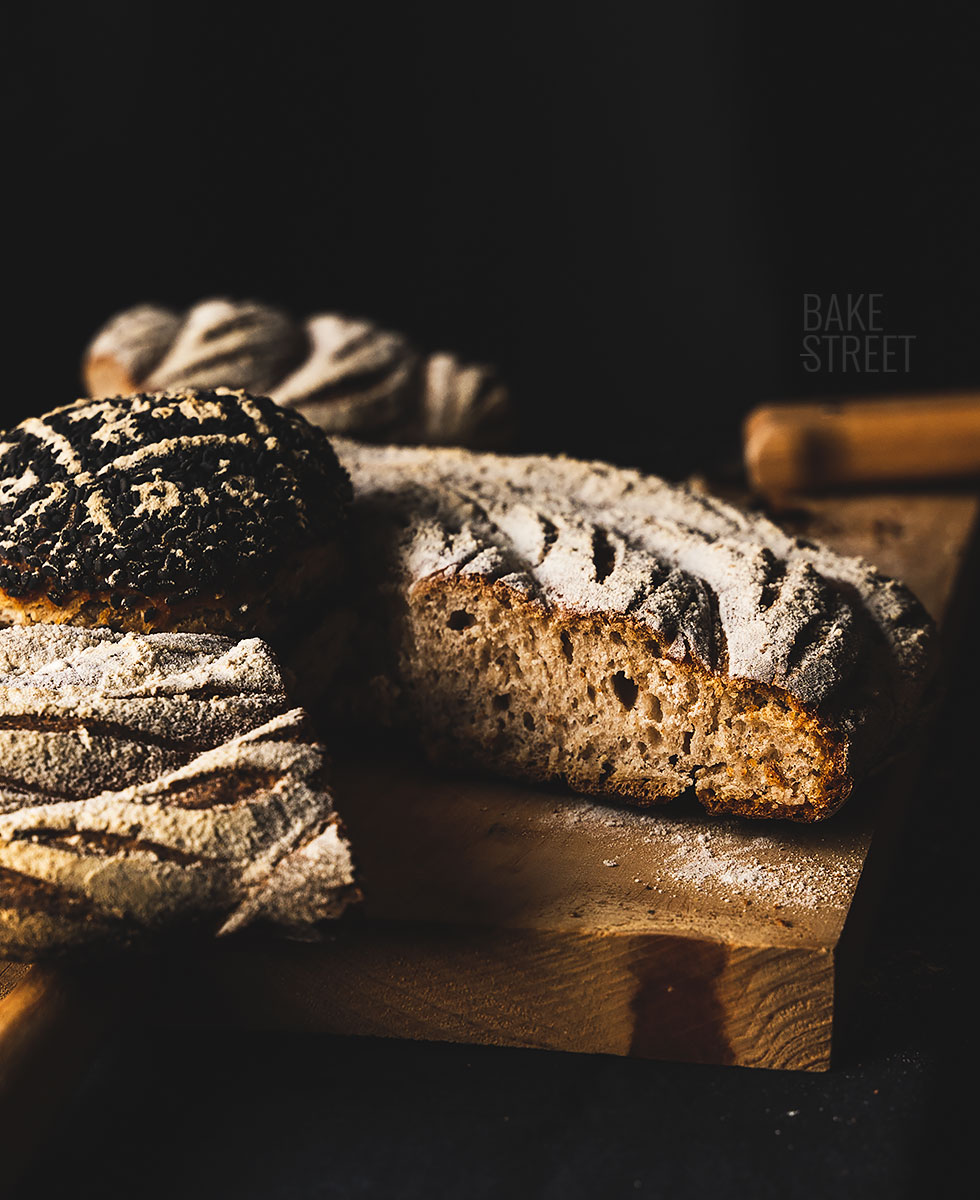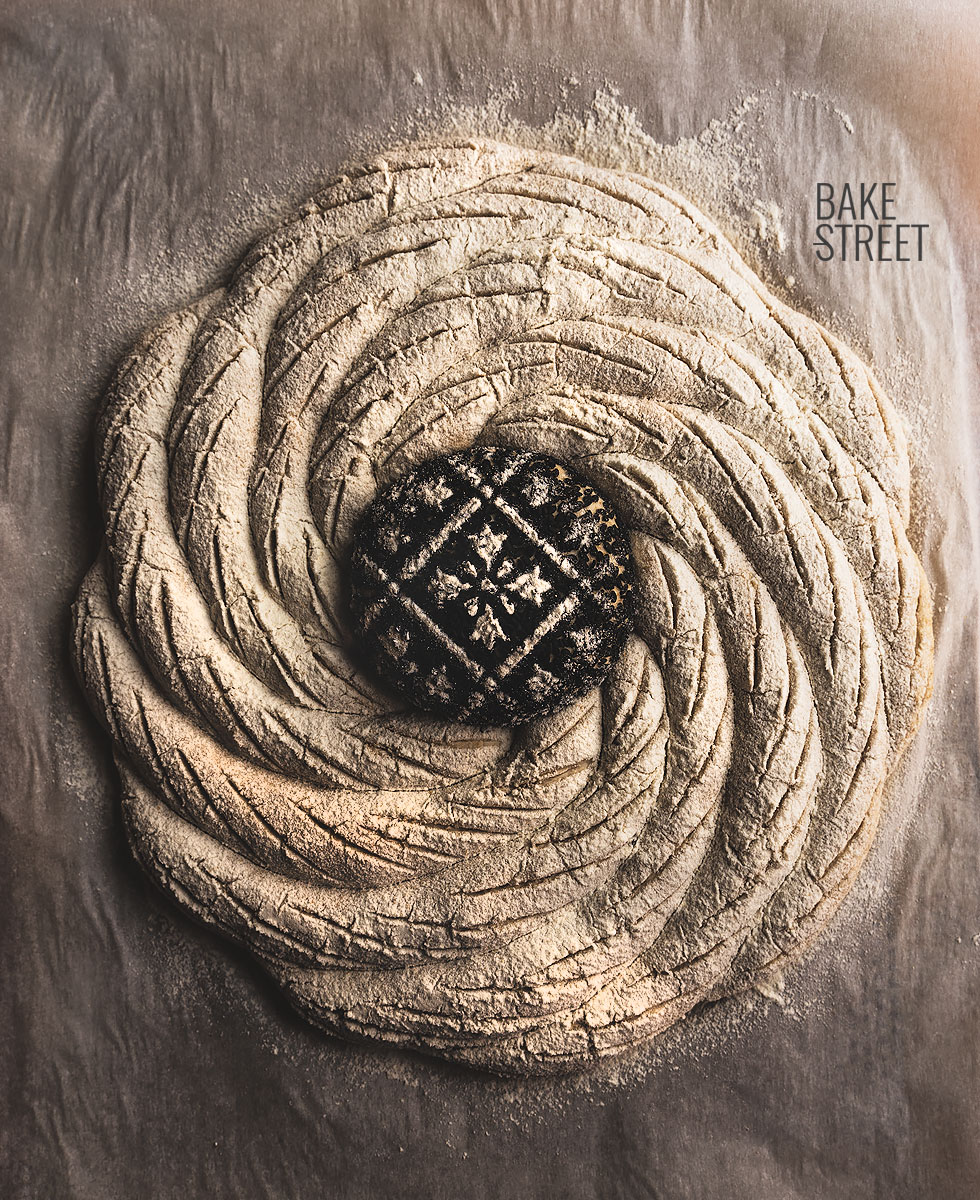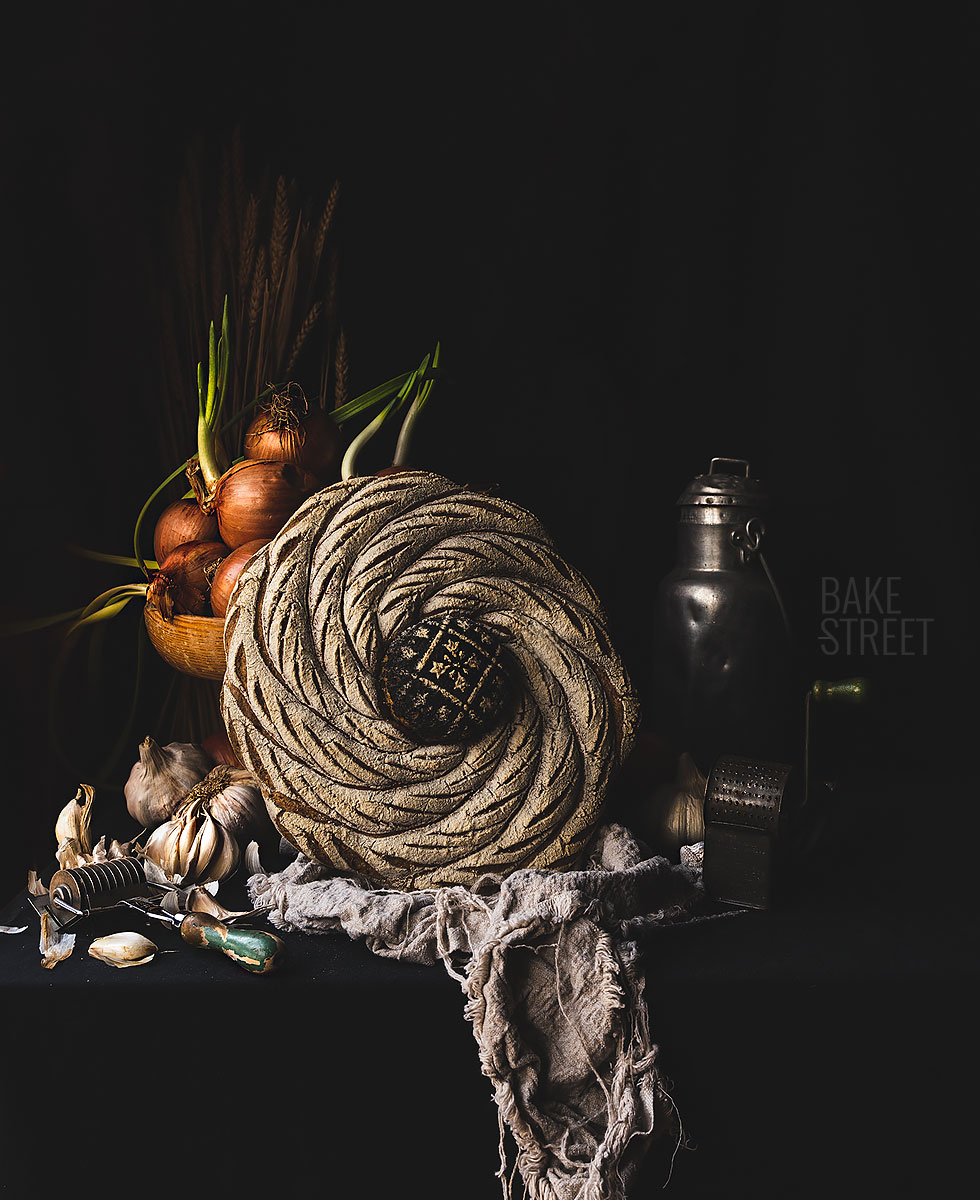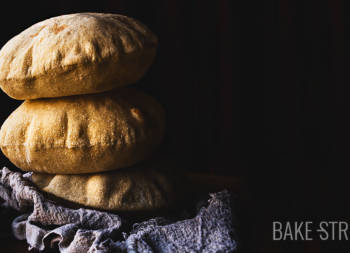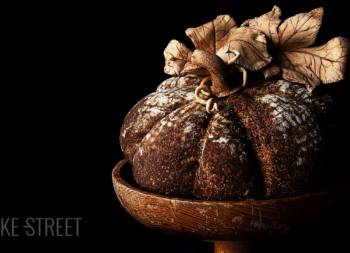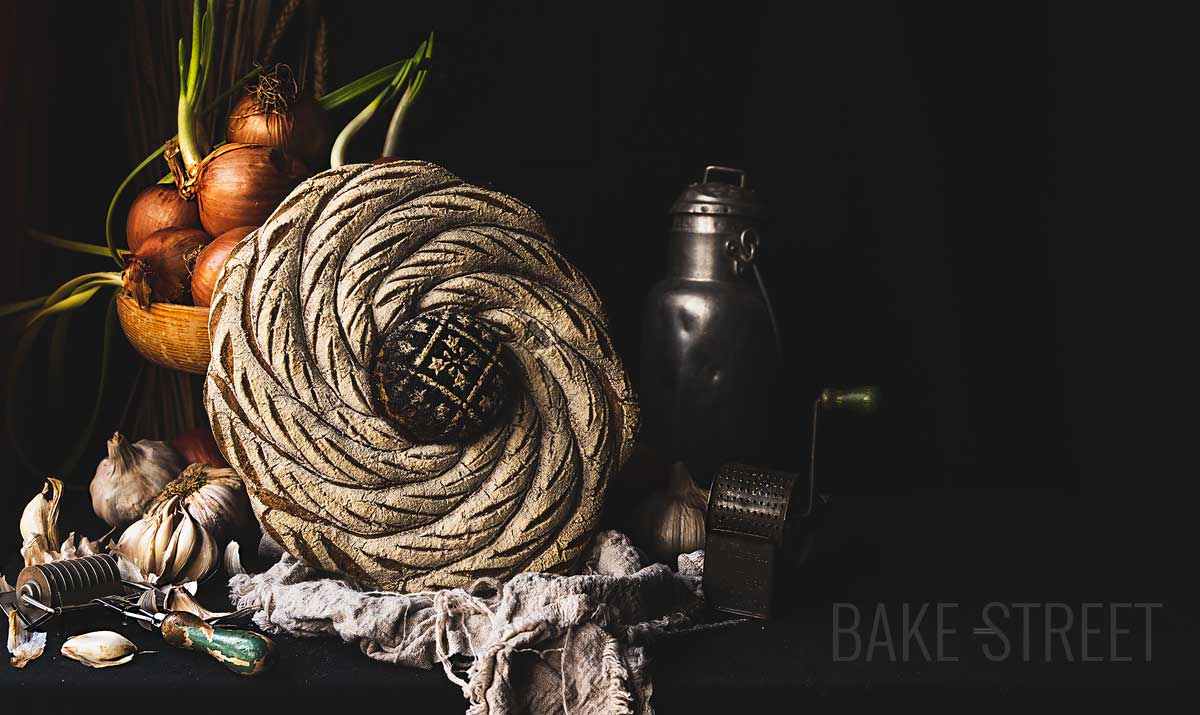
Sourdough Grian Bread
You won’t believe it, but I had this bread in mind since 2014, it seems incredible that it took me almost 7 years to make it. But hey, it’s never too late if it’s good, right? The thing is that I’ve been making bread all week and, for some reason, I remembered this bread, which is creation of Josep Pascual. The fact is that I said, enough procrastinating, and I decided to make it (I should do it with many other things… But that’s a start). So here is my Sourdough Grian Bread.
Originally, its author calls it “Pan Sol” – “Sun Bread”. In my case I wanted to adapt the name to what I felt when I saw it, as it has happened with many other breads that I have created and I have left on the blog; Hveiti Bread, Flechtkottbröt, Shibari Bread… Many times, when I make a bread or a preparation, I feel that I have to give it a name that tells something about it.
I consider that all living beings and all things have something to tell or transmit. I think it is something important, almost at the same level of what we are creating and showing. So I started to look for information in order to give it a suitable name.
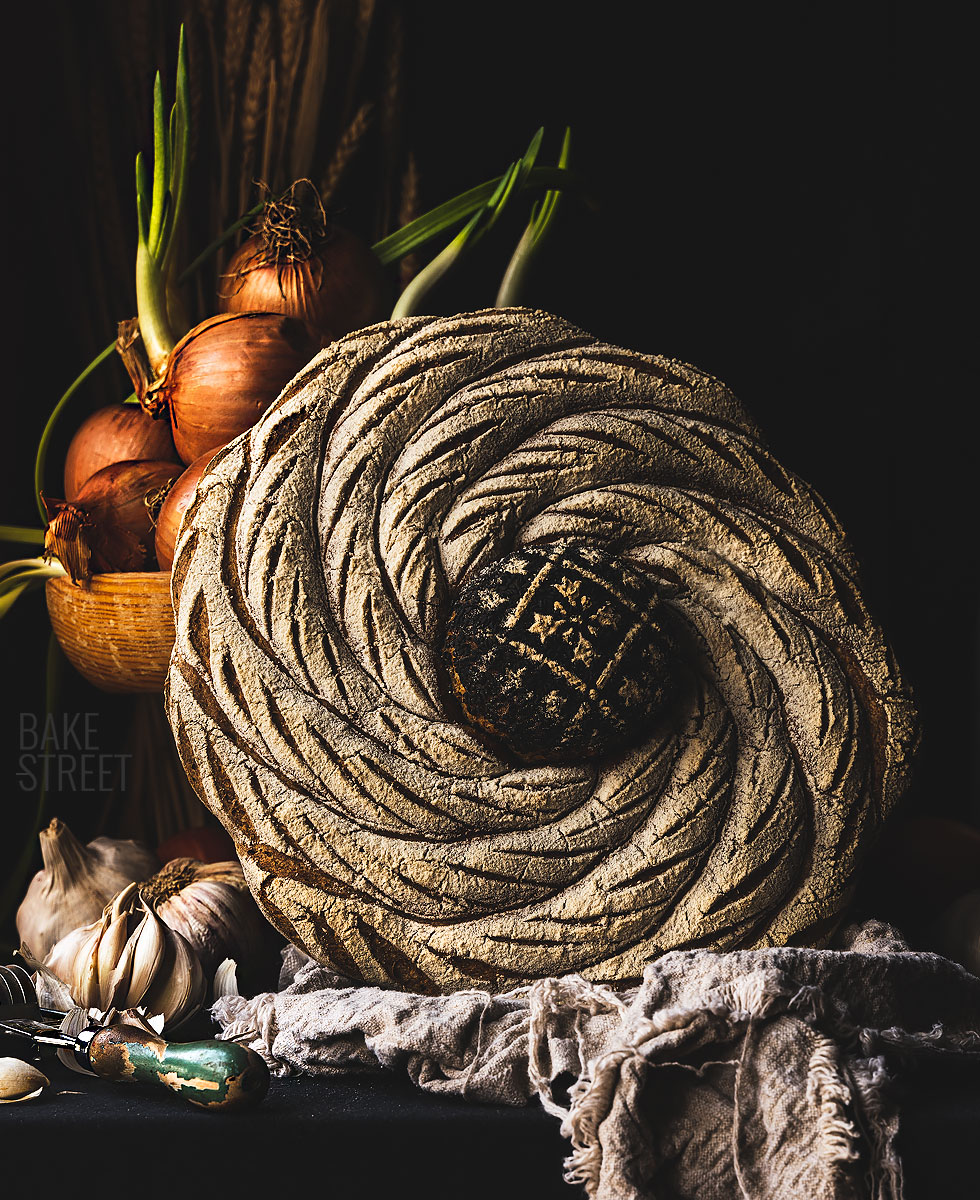
The origin of its name: Sourdough Grian Bread.
It is true that this bread is very similar to the shape of the sun. It could also be a star, a flower or even an octopus. Why not. But I quite liked the original idea.
The external appearance transports me to the Celtic civilisation. The colour, the shape, the curves that draw the lines, the textures, the drawings…. It transports me directly to that culture and stage of history which, in its first phases, belongs to the Bronze Age, but which in its second half already belongs to the Iron Age.
An elite that arose from trade exchanges between the north and the Mediterranean world, which received cultural influences that gave rise to a society of princes around the 8th century BC who were buried in large monumental tombs in which objects of exceptional artistic quality were found.
In the 4th century BC, migrations were provoked that exported their culture all over Europe and formed the classical Celtic, arriving from Galatia in Turkey to the Celts of Iberia, as well as reaching the British Isles.
Something was considered Celtic if it was Latenian (La Tène culture), however cultures such as the Celtiberian do not exhibit Latenian traits to the same extent as the Gauls, for example.
It is now considered that ancient Celtica had not only one main area and several derivatives but that each of them, arising from a common origin, has distinct characteristics; the Hispanic, the insular, the Central European, the Italic Peninsula and the Galatian Anatolian.
Celticism related druid with Celt, that connection is true, but not unique.
This word makes us see druids as wizards, witches or sorcerers in our minds (influenced by the adventures of Asterix and Obelis, surely). Always working on healing or powerful potions and beverages. But in reality they were philosophers and theologians who, thanks to their demanding education, acquired great prestige in ancient Gaul.
Druids mastered the divinatory art as well as all sciences. Kings cannot make decisions without their consent.
“They are regarded as the most righteous of men. Druids often reflect on the stars and their movement, on the size of the world and the earth, on the power of the immortal gods and their abilities; they transmit all this knowledge to the youth”.
It was with these words of admiration that one of the greatest wise men of antiquity, the philosopher Posidonius of Apamea, referred to the Gaulish Druids.
There can be Celts and no Druids. They are only recorded in Britannia and Gaul. Later Irish Celtic literature shows them in the island, so we understand that it may be an insular process that spread to Gaul.
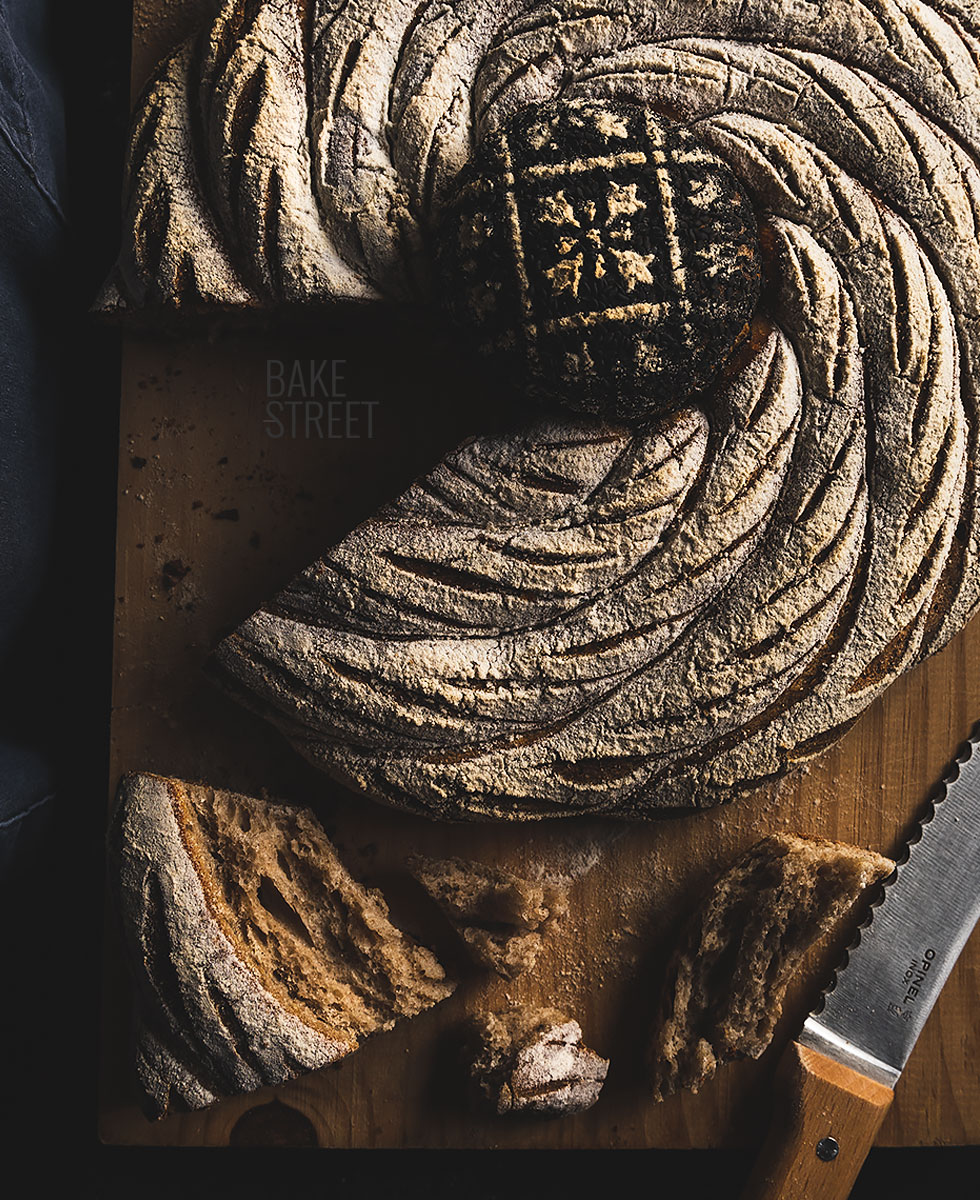
One of the most important changes to the old paradigm, and the one on which the new conception of Celtic is based, is its language..
Language and culture were supposed to have travelled with the Celts as they expanded from their central European ancestral home. But this was not entirely the case.
John T. Koch defends the idea that the Celtic languages originated as a branch of the Indo-European languages not in Eastern Europe, from where they radiated westwards, but that they arose in Iberia (modern Spain and Portugal) among the Celtiberians and neighbouring peoples as a combination of Paleo-Hispanic proto-Indo-European and native non-Indo-European languages (related to Basque), with some Phoenician influence.
From there, they spread eastwards into what was later Gaul (modern France, Germany and its environs), where early forms of Italic and Germanic languages would have developed independently of the Proto-Indo-European ones.
And you might be thinking… What’s all this about?
Well, you are right. But I want to bring to the heart the reason that made me give it this name and I couldn’t do it in any other way than by introducing you a little bit to its history.
“Grian” means “Sun” in Scottish Gaelic.
An Indo-European language of the Celtic branch, a member of the Goidelic or Gaelic languages, which arrived in Scotland around the 5th century when ethnic Celtic Scots from the north of Ireland settled on the west coast. They brought with them a variety of Old Irish which replaced the ancient Pictish language spoken in the area up to that time. Hence its similarity to the Gaelic spoken in Ireland and the Isle of Man.
Its culture, its customs, its “magic”… They are sculpted and take shape in the appearance of this sourdough grian bread. That is why I would like to tell you a little about them so that you can understand, more closely and accurately, the reason why I have chosen this word and this civilisation.
| INGREDIENTS | BAKER % | SOURDOUGH | REST | TOTAL |
|---|---|---|---|---|
| Multi-cereal flour | 9,55 % | 57,5 g | 57,5 g | |
| Bread flour | 73,85 % | 445 g | 445 g | |
| Rye flour | 16,6% | 100 g | 100 g | |
| Water | 67,6 % | 57,5 g | 350 g | 407,5 g |
| Salt | 1,8% | 11 g | 11 g |
Sourdough Grian Bread recipe
SOURDOUGH:
- 115 g sourdough 100% hydrated and feed with multi-cereal flour
DOUGH:
- 445 g bread flour
- 100 g whole rye flour
- 115 g sourdough 100% hydrated
- 350 g water
- 11 g salt
FOR DECORATING:
- black sesame seeds
- flour
MATERIAL:
- kneader (optional)
- digital scale
- scraper
- baking parchment
- lame bread cutter
Instructions
FIRST DAY
Prepare Grian bread dough.
- In a large bowl add the flours and water, mix with your hands (in my case with the KitchenAid for 4 minutes) until you obtain a homogeneous dough. Cover with a shower cap and make autolysis for 60 minutes.
- Add the sourdough and knead with the dough hook on speed 1 for 5 minutes. If kneading by hand, knead and fold until the sourdough is completely integrated into the dough.
- Cover and let rest for 15 minutes.
- Add the salt. Gently fold to distribute it and integrate it into the dough.
- Transfer to a clean work surface, without any flour, and finish kneading by hand if you have done the first part in a kneading machine.
- We will combine kneading with resting. Knead for 5 minutes and leave to rest for 10 minutes. In total we will knead 3 times.
- To check the state of the gluten mesh, we must always do it after a rest.
- Once the dough has a good gluten development, make bulk fermentation.
Make bulk fermentation.
- Prepare a large airtight container or a large bowl, grease lightly with oil and put the dough inside. Cover.
- Leave to rise for 4 hours at a controlled temperature, in my case, 79.7ºF/26.5ºC. Leave to rest until it has risen to 1/3 of its volume.
- At this point, refrigerate for 12-13 hours at 39.2ºF/4ºC.
SECOND DAY
Temper the dough and shape the bread.
- Depending on the outside temperature, temper the dough for 1-2 hours before shaping. If the dough has not doubled, leave it until it does.
- Cut a 100 g portion of dough, which will be the centre piece.
- Weigh the rest of the dough and divide it into 10 equal pieces, in my case 87 g/piece.
- Sprinkle a work surface lightly with flour and begin to shape the pieces. They will have an elongated format, so we proceed to form them in the same way we would make a baguette.
- Once we have all the pieces shaped, cover the central piece with the seeds.
- Spray with water and cover with the black sesame seeds.
- Place baking paper on a tray and place the central piece (the one with the seeds) in the centre.
- Put the rest of the pieces around the centre piece as if they were rays of sunshine.
- Remove the central piece for a moment and join the ends of the elongated pieces together. Press gently.
- Spray the centre with water and place the seeded piece back in the centre.
- Turn all the oblong pieces so that they are next to each other, this part we will see better in the video.
- Cover with plastic film and leave to rise, in my case for 3 hours to 78.8ºF/26ºC. It should rise 30-35% of its initial volume.

Bake Grian Bread.
- Preheat oven 419ºF/215ºC at least 20-30 minutes prior to baking with your stone or steel sheet on it positioned on final rack. Put inside a pan with volcanic stones, this helps to get steam in the baking.
- Sprinkle the whole loaf with flour except for the centre piece. Using a stencil, decorate the piece with seeds (this last step is optional).
- Make cuts in the elongated pieces.
- Place the bread into the oven and pour boiling water over the pan with volcanic stones. Close the oven door immediately to trap the moisture.
- Bake for 20 minutes at 419ºF/215ºC.
- After first 20 minutes, open the oven door to allow steam goes out, remove the track with volcanic stones with kitchen gloves and reduce oven temperature to 410ºF/210ºC. Bake for 10 minutes.
- Reduce temperature to 390ºF/200ºC and bake 10 minutes more. Finally bake with convection at 375ºF/190ºC for 10 minutes. Bread will get a better crust this way.
- Total bake time is 50 minutes.
- Once baking is complete, turn off the oven and leave it in the oven for a few minutes with the door ajar to help the crust form, about 15 minutes.
- Remove the loaf from the oven and leave to cool completely on a rack before cutting.
PRESERVATION:
- This type of bread is perfectly tender for 1-2 days. As it is very thin, it is less tender and spongy.

Notes for Sourdough Grian Bread
- The final hydration of the bread will also depend on the type of flour you use. If it has more or less strength/protein, it can vary a few grams up or down.
- Always use a flour with similar or equal conditions to the recipe you are going to follow to achieve the same results. Or as close as possible.
- Flours can be adapted and modified, we just have to keep in mind what we are working with and adjust it according to your needs.
- Rye is a type of cereal that leaves us with very sticky doughs, as well as hindering the development of gluten. Keep this in mind.
- If you want to omit rye, you will have to reduce hydration considerably, as this cereal has a higher absorption capacity than other flours.

- Respect the resting and fermentation times and take great care in the handling process.
- This bread must be taken to an extreme fermentation since we are not going to scorethe central piece, but we do not want it to crack during the baking. That is why we must control the final fermentation very much.
- If your oven doesn't allow you to turn off the top resistance, ideally, for the first 15 minutes you should turn off the oven completely and not open the door during that time. After these minutes, remove the container from the steam. Turn on the oven and continue baking with the guidelines I give you from the fifteenth minute.
- Black sesame can be substituted with poppy seeds or any other variety of seeds to your liking.

If you like to make bread and go a little further in terms of shaping, don't hesitate to make this Sourdough Grian Bread.
The result, given the flours used and their hydration, will not be a super honeycombed crumb. But don't let this fool you. Not getting a bread with beautiful open crumb is not linked to our bread being dense and difficult to chew or eat. Its crumb is incredibly tender and spongy, not to mention its aroma and flavour.
Rye is a cereal that, despite making the baking process a little difficult (in terms of kneading and handling), gives us breads with an incredible aroma and flavour, with an impressive colouring in the crumb. You have to give it a try and, please, let me know how it goes ;)
I wish you a wonderful weekend!
Big hugs,
Eva
Sources:Céltica, Historia National Geographic
